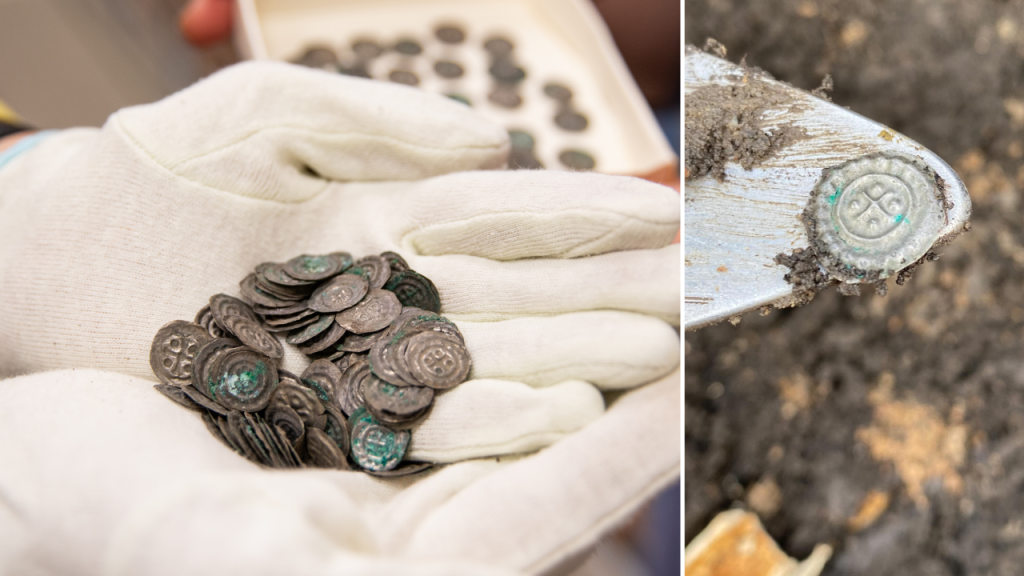Swedish archaeologists made a remarkable discovery during an excavation of a 12th-century grave in Visingsö, an island in Sweden. The grave contained the remains of a young man believed to be between 20 and 25 years old, along with an unexpected treasure trove of coins. The metal pieces, known as bracteates, were produced between 1150 and 1180. A total of 170 silver bracteates were found, making this discovery significant in the field of Swedish archaeology.
The excavation was led by project manager Anna Ödéen, who described the moment when the coins were uncovered. Initially, only three silver coins were visible, but as they continued digging, more coins were found near the deceased’s left foot. This find is considered unique and special due to the rarity of similar discoveries from this time period. Swedish historians believe that this discovery will greatly contribute to their understanding of early medieval coin history in Götaland.
One intriguing aspect of this find is that the coins were discovered in a Christian grave, which was not a common practice during that era. Typically, such burial customs were associated with prehistoric times. This has raised questions about why the young man was buried with a hoard of coins. The county museum’s archaeologists are hopeful that further analysis of the find will provide more insights into the individual’s story and the significance of the buried treasure.
The Jönköping County Museum expressed excitement about the discovery, noting that some of the coins were completely unknown before this find. A Swedish coin expert, Eeva Jonsson, described the discovery as “completely sensational” and emphasized that it would greatly impact the understanding of early medieval coin history in the region. This find has the potential to shed light on a period of history that is still largely unknown, highlighting the importance of such archaeological discoveries.
The archaeological find in Visingsö has generated interest and curiosity among researchers and historians, who are eager to learn more about the young man buried with the treasure trove of coins. The museum’s team is prepared to continue their work with the find in the hope of uncovering additional clues that may provide more insights into the significance of this discovery. Despite the lack of information available at present, this find has already been recognized as a valuable contribution to the study of early medieval history in Sweden.
Overall, the discovery of the 12th-century grave with buried treasure in Visingsö represents a significant milestone in Swedish archaeology. The excavation of the young man’s grave, filled with 170 silver bracteates, has captured the attention of experts and historians alike. The mysterious presence of the coins in a Christian burial site has raised intriguing questions and sparked further research efforts to uncover the story behind this unique find. As the investigation continues, the hope is that this discovery will enrich our understanding of early medieval coin history and provide valuable insights into the customs and practices of the time.













